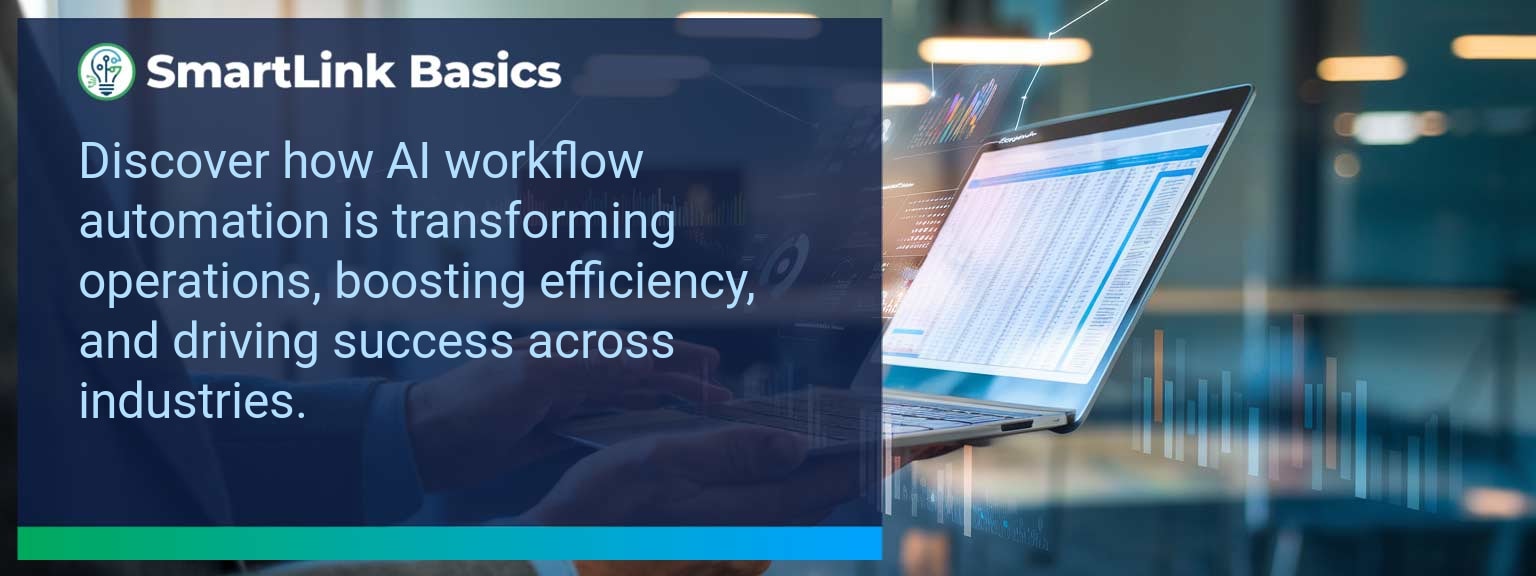A McKinsey report found that companies adopting AI process optimization are reducing operational costs by up to 30% while accelerating time-to-market. For sales leaders and business owners, this shift isn’t just about technology—it’s about redefining operational capability. At SmartLink Basics, we’ve seen firsthand how AI workflow automation eliminates bottlenecks, sharpens execution, and sets a scalable foundation for revenue growth.
In this article, you’ll see documented examples of intelligent systems transforming workflows, the measurable results achieved, and a 90-day plan to implement automation that delivers quantifiable ROI. Whether you manage a sales division, own a growth-focused company, or lead strategic operations, the frameworks here will help you make structured, data-backed automation decisions.
- Automation streamlines repetitive tasks, freeing resources for higher-value work.
- AI process optimization improves decision speed and workload balance.
- Workflow automation tools boost operational efficiency across teams.
- Machine learning automation identifies patterns invisible to manual review.
- Structured rollout plans ensure adoption and measurable ROI.
The Problems In Traditional Workflows
Legacy workflows often rely on manual data entry, siloed systems, and intermittent reporting. These gaps create slow response times, duplicated work, and missed revenue opportunities. Sales teams struggle to align pipeline actions with real-time customer feedback. For example, one B2B manufacturer used three separate platforms for lead tracking, order management, and customer follow-up. The lack of system integration led to delays of 48–72 hours in client responses. Eliminating fragmented processes begins with mapping the workflow from lead capture to deal closure. Identify decisions that can be automated with intelligent systems, and align cross-functional teams to share metrics.Implementing Intelligent Automation Tools
Deploying AI workflow automation starts with defining a single operational area where measurable gains are achievable. Focused scope increases adoption rates and minimizes risk. Key components include AI process optimization models to prioritize tasks, workflow automation tools to manage cross-department handoffs, and analytics integrations to track output. In one retail use case, predictive order routing reduced fulfillment delays by 22%. Anchor automation efforts in clear KPIs. Integrate the tools gradually into your existing operating cadence to maintain service quality while ramping capability.Measurable Operational Improvements Achieved
When leaders track metrics at both the process and outcome levels, the effect of automation becomes visible within weeks. Manufacturers implementing intelligent order verification report a 40% drop in rework due to errors. Sales organizations using AI routing for account assignments experienced a 19% lift in rep productivity in the first quarter. Tie every automation initiative to a baseline and target. Use the following metrics to monitor both adoption and performance impact.| Category | Metric | Definition | Target |
|---|---|---|---|
| Leading | Automation Task Completion Rate | % of eligible tasks successfully processed by automation | 95%+ |
| Leading | Data Sync Frequency | Time between data updates across connected systems | < 5 minutes |
| Lagging | Cycle Time Reduction | % decrease in total process time from initiation to delivery | 15%+ |
| Lagging | Revenue Impact | % change in revenue attributed to automation improvements | 10%+ |
| Quality | Error Rate | % of automated tasks requiring manual correction | < 2% |
| Quality | User Satisfaction | Survey score from teams interacting with automation tools | ≥ 4.2/5 |
The Next Phase Of Automation
As AI workflow automation matures, the emphasis shifts from task automation to decision augmentation. Predictive analytics, adaptive learning systems, and connected data ecosystems will increasingly guide revenue strategy. One logistics firm is now integrating machine learning automation with external economic indicators to adjust pricing dynamically, reducing margin volatility. Plan for scalability now. Build your automation architecture with modularity to integrate the next generation of intelligent systems without costly overhauls.Get the 90-day plan, coaching rubric, and dashboard template to operationalize AI in your enablement program.









